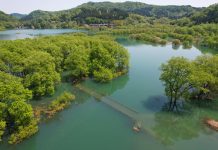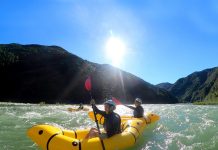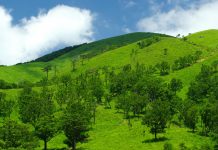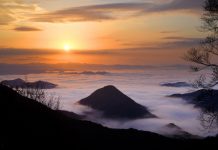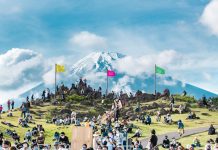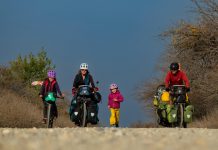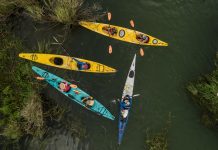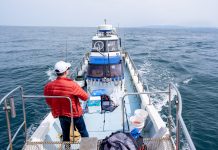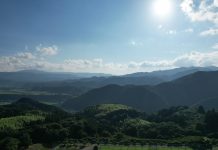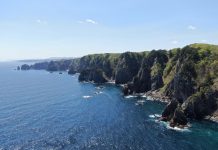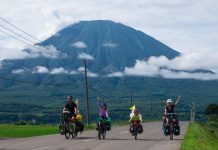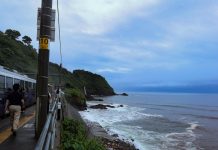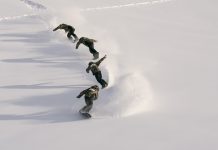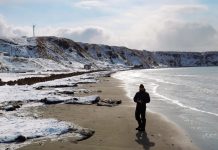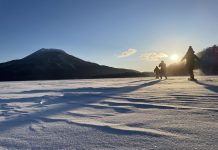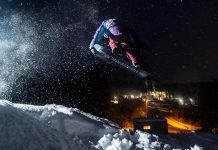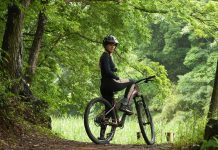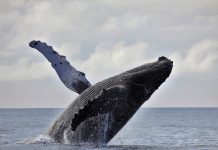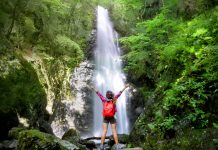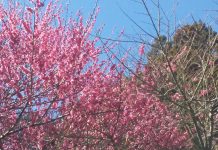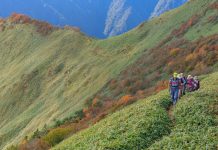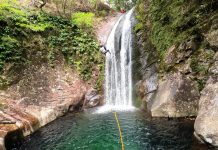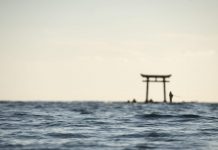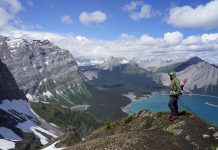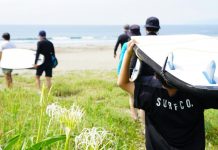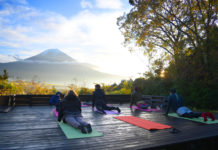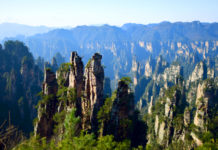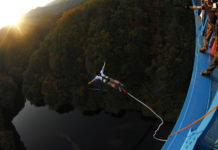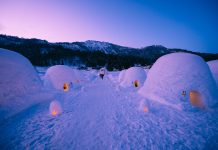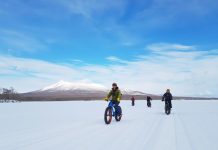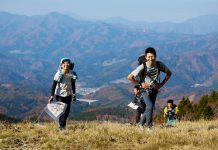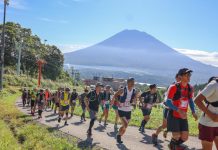In Japan, July and August are the peak months for haikingu (ハイキング; hiking) and jusou (縦走; backpacking/trekking across the mountains) so in this issue of Pera Pera, we’ll cover another important topic to aid you in your backpacking adventures: MOUNTAIN TALK.
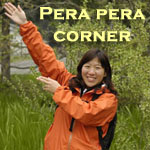 There aren’t very many Japanese conversation books out there that will teach you what I call “Mountain Talk” – words and phrases useful for backpackers and hikers. What do you say when you pass by someone along the trail? How do you ask for or give directions? How do you describe the trail conditions?
There aren’t very many Japanese conversation books out there that will teach you what I call “Mountain Talk” – words and phrases useful for backpackers and hikers. What do you say when you pass by someone along the trail? How do you ask for or give directions? How do you describe the trail conditions?
MOUNTAIN GREETINGS (山の挨拶)
Let’s start with some basic mountain etiquette – aisatsu (挨拶; greetings). When you pass by someone along the trail, a polite and friendly kon-nichiwa (こんにちは; hi, hello) is the common greeting. Unfortunately, in Japanese, there aren’t any convenient one syllable words such as “hi,” so you’ll have to use the word in its entirety.
If you’re a strong-legged alpine speedster wanting to motor by a fellow hiker, use the phrase suimasen (すいません; excuse me), saki ni itte mo iidesuka?”(先に行ってもいいですか?; May I pass ahead of you?) and as you zip by, make sure to shout out a polite arigatou gozaimasu (ありがとうございます; thank you), preferably in its entirety as well (as opposed to a more casual arigatou (ありがとう; thanks).
On the other hand, if you’re the leisurely type who prefers not to rush up the mountain, or you’re looking to get rid of a tailgater breathing down your backpack, step to the side and wave the speedsters through with the phrase douzo osakini (どうぞ、お先に; go ahead). You can flip the two words around and say osakini douzo.
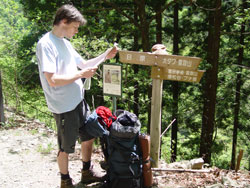 DIRECTIONS (方向を聞く・教える)
DIRECTIONS (方向を聞く・教える)
“Suimasen (すいません; excuse me), ABC wa docchi desuka?” (ABCはどっちですか?; Which way is it to the ABC?) A few possible responses could be: “Konomama massugu desu.” (このまま、まっすぐです。Keep going straight ahead.) “Tsugino bunki de hidari desu.” (次の分岐で左です。Turn left at the next intersection.)
Perhaps you want to find out how much further you have to go: “ABC-yama made ato donokurai desuka?”(ABC山まで、あとどのくらいですか?How much further is it to Mt. ABC?) Some possible responses include: “Ato ichi jikan no nobori desu” (あと一時間の登りです;It’s another hour’s climb)
You make your way up Mt. Kintoki but the ridge is exposed, and it can get extremely hot during the summer. Before you know it, you realize you’re completely out of water. You may want to ask where you can fill up by saying:
“Chikaku ni mizuba wa arimasuka?” (近くに水場はありますか?; Is there a place where I can get water nearby?)
“ABC-yama sanchou no chaya de utte imasuyo.” (ABC山山頂の茶屋で売っていますよ; You can buy water at the teahouse on top of Mt. ABC.)
“Mizuba wa nishi no hou ni oriru to arimasuyo.”(水場は西の方に下るとありますよ; You can get water by descending to the west.)
By the way, in Japan, you can often find water en route. The easiest place to find water is at the mountain huts. Sometimes you can also find spring water flowing from the side of the mountain and, in general, this water is safe to drink without having to filter it, but you should always check first.
TRAIL CONDITIONS (トレイルの状態)
Finally, here are a few words that describe the trail conditions: suberu (滑る; to slip) or suberiyasui (滑りやすい; slippery), doro doro (泥どろ; muddy), kyu (急; steep), and the phrase kiotsukete kudasai (気をつけてください; Please be careful). You can pull these words together like this:
“Doro doro de suberiyasui kara kiotsukete kudasai.” (ドロドロで滑りやすいから気をつけてください; Please be careful because it’s very muddy and slippery.)
Or like this: “Kono saki wa kyu desuyo. Kitotsukete kudasai.” (この先はとても急ですよ。気をつけてください。; Please be careful. It’s very steep ahead.)
Another word that may also come in handy up on the mountains is rakuseki (落石; falling rocks). The fastest way to warn someone about a falling rock is by abbreviating it and shouting out “RAKU!” (落!; slang for “falling rock”).

